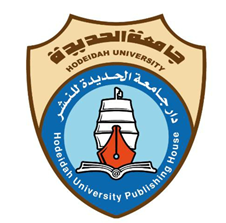Total phenols content, Antioxidant activity and Antibacterial activity of some medicinal plants in Yemen
DOI:
https://doi.org/10.59846/ajbas.v3i2.677Keywords:
Clove, Ginger, Tecoma, Antioxidant, Antibacterial activityAbstract
The aim of this research was to extract total phenolics from clove seeds, ginger rhizomes, and Tecoma flowers using various polar solvents, followed by quantification using the Folin method. Subsequently, the antioxidant activity was evaluated using DPPH assay, and the antibacterial activity against two strains of Gram-positive bacteria, Staphylococcus aureus, and Gram-negative bacteria, Escherichia coli, was assessed using the disc diffusion method. The results demonstrated the superiority of clove seed extract over other extracts in terms of total phenolic content (816.47 mg GAE/10g), antioxidant activity (73.8%), and the inhibitory concentration of 50% DPPH (0.015 mg/mL). Plant extracts exhibited efficacy against Gram-positive bacteria, while no activity was observed against Gram-negative bacteria. These findings suggest the potential use of total antioxidants extracted from clove seeds and ginger rhizomes in the medical or industrial fields as alternatives to synthetic antioxidants.
References
Arslan, Kutbettin. (2023). The Antioxidant, Antimicrobial, and Total Phenolic Potential of Clove Extracts for Inhibition of Food Pathogens. Journal of Science and Technology., 16 (2): 453-464. DOI: 10.18185/erzifbed.1279953.
Assefa, A.D., Keum Y.S., & Saini, R.K. ( .(2018A review on health benefits of phenolics derived from dietary spices J. Food Meas. Charact. 12, 1548. Doi: 10.1016/j.crfs.2022.09.009
Binuti, O.A., & Lajubutu, B.A. (1994). Antimicrobial potentials of some plant species of the Bignoniaceae family. Afr. J. Med. Med. Sci., 23:269- 273.
Chiozzi, V., Agriopoulou, S., & Varzakas, T. (2022). Advances, applications, and comparison of thermal (pasteurization, sterilization, and aseptic packaging) against non-thermal (ultrasounds, UV radiation, ozonation, high hydrostatic pressure) technologies in food processing. Applied Sciences, 12(4):320-326. Doi.org/10.3390/app12042202
Diego, F. C., Claudia, R. F., & Wanderley, P. O. (2014). Clove (Syzygium aromaticum): a precious spice. Asian Pac J Trop Biomed., 4(2): 90–96. Doi: 10.1016/S2221-1691(14)60215-X
Elhussein, E.A., Kurtulbaş, E., Bilgin, M., Birteksöz, A.S. & Tan, M.(2018). Screening of the most consumed beverages and spices for their bioactive non-nutrient contents. J. Food Meas. Charact., 12: 82-89. Doi.org/10.1007/s11694-018-9846-9.
Ghasemzadeh, Ali., Hawa, Z., Jaafar, E. & Asmah, Rahmat. (2010). Antioxidant Activities, Total Phenolics and Flavonoids Content in Two Varieties of Malaysia Young Ginger (Zingiber officinale Roscoe)., Molecules 2010, 15, 4324-4333. Doi:10.3390/molecules15064324.
Govindappa, M., Sadananda, T.S., Channabasava, R., Jeevitha, M.K., Pooja, K.S. & Vinay, B. (2011). Antimicrobial, antioxidant activity and phytochemical screening of Tecoma stans (L.) juss. ex kunth. Journal of Phytology Phytopharmacology., 3(3): 68-76.
Grant, K., & Lutz B., (2000). Alternative therapies: ginger. American Journal of Health System Pharmacy., 57: 945-947. Doi.org/10.1093/ajhp/57.10.945
Hassan, F. A., Ismail, A., Hamid, A. A., Azlan, A., & Al-sheraji, S. H. (2011). Characterisation of fibre-rich powder and antioxidant capacity of Mangifera pajang K. fruit peels.Food chemistry., 126(1):283-288. Doi.org/10.1016/j.foodchem.2010.11.019.
Kalem, I. K., Bhat, Z. F., Kumar, S., & Desai, A. (2017). Terminalia arjuna: A novel natural preservative for improved lipid oxidative stability and storage quality of muscle foods. Food Science and Human Wellness, 6(4): 167-175. Doi.org/10.1016/j.fshw.2017.08.001.
Liang, M. H., (1992). From America: Cookbook medicine or food for thought: Practice guidelines development in USA. Annals of the Rheumatic Diseases, Dis., 51: 1257-1258. Doi: 10.1136/ard.51.11.1257
Lim, Yong., Neeraj Paliwal., Syed, Raza., Nabila, Perveen., & Naeem, Khan.(2023). Phytochemical Screening, Antibacterial, Total Phenolic Content and Free Radical Scavenging Activity Determination of the Antioxidant Activity Determination of Syzygium Aromaticum. Biomed J Sci & Tech Res 47(5): 38899-38913. DOI: 10.26717/BJSTR.2022.47.007558.
Mahmudati, Nurul., Hawin, Nurdiana., & Poncojari, Wahyono. (2022). Antioxidant activity and phenolic content of ginger (Zingiber officinale Roscoe) combination with cinnamon (Cinnamomum burmanii) and Sappan wood (Caesalpinia sappan) as an anti-diabetic. GSC Biological and Pharmaceutical Sciences., 20(03): 001–005. Doi.org/10.30574/gscbps.2022.20.3.0336.
Małgorzata, Muzolf‑Panek., & Kinga, Stuper‑Szablewska. (2021). Comprehensive study on the antioxidant capacity and phenolic profiles of black seed and other spices and herbs: effect of solvent and time of extraction. Journal of Food Measurement and Characterization.,15:4561–4574. DOI:10.1007/s11694-021-01028-z.
Peter, K. V. (2000). Handbook of Herbs and Spices. CRC Press Woodhead Publishing, Cambridge, 319 p.
Przygodzka, M., Zielińska, D., Ciesarová, Z., Kukurová, K., Zieliński, H. (2014). Comparison of methods for evaluation of the antioxidant capacity and phenolic compounds in common spices LWT—Food Sci. Technol. 58: 321-327. Doi.org/10.1016/j.lwt.2013.09.019.
Qian-Qian Mao , Xiao-Yu Xu , Shi-Yu Cao , Ren-You Gan, Harold Corke , Trust Beta and Hua-Bin Li(2019) Bioactive Compounds and Bioactivities of Ginger (Zingiber officinale Roscoe). Foods 2019, 8, 185. Doi:10.3390/foods8060185
Raju, S., Kavimani, S., Uma, M., & Sreeramulu, R.K. (2011). Tecoma stans (L.) Juss. Ex Kunth (Bignoniaceae): Ethnobotany, Phytochemistry and Pharmacology. J. Pharm. Biomed. Sci., 8:1-5.
Salem, Z.M., Yousry, M., Gohar, L.M., Camacho, Nader., El-Shanhore A. & Salem, M. (2013). Antioxidant and antibacterial activities of leaves and branches extracts of Tecoma stans (L.) Juss. ex Kunth
against nine species of pathogenic bacteria. African Journal of Microbiology Research.,7(5): 418-426, 29.
Škerget, P., Kotnik, M., Hadolin, A., Rižner-Hraš, M., Simonic, Ž., & Knez, P.(2005). Phenols, proanthocyanidins, flavones and flavonols in some plant materials and their antioxidant activities. Food Chem., 89:191-198. Doi.org/10.1016/j.foodchem.2004.02.025
Tahir, Muhammad., Hafsah, Siti., Chuzaemi, Eko., & Widodo, B.(2020). Chemical compounds and antioxidant contents of cloves leaves essential oil.Agriculture secine journal., (7) 1:37-44. DOI: https://doi.org/10.22487/agroland.v6i1.3
Thaís, P., Adriano G., Vanessa, S., Katyuce F., Denise. B., Silva, B., Luciana A. (2022). Antibacterial and antioxidant properties of flowers from Tecoma stans (L.) Juss. ex Kunth (Bignoniaceae) South African Journal of Botany., 144: 156-165. Doi.org/10.1016/j.sajb.2021.08.028.
Trilaksani, W.(2003). Antioxidants: types, sources, mechanisms of action, and roles in health. http://rudyct.tripod.com/ sem2023/wini_trilaksani.htm.
Turgay, O., & Esen. Y. (2015). Antioxidant, total phenolic and antimicrobial characteristics of some species. Bulgarian Journal of Agricultural Science., 21 (3): 498-503.
Tuzlaci, E., & Eryaşar F. P. (2001). Turkish folk medicinal plants. PartIV. Gönen (Balıkesir). Fitoterapia., 72: 323-343. DOI: 10.1016/s0367-326x(00)00277-x
Vermerris, W., & Nicholson, R.(2006). Phenolic compound biochemistry, Netherlands, Springer.
Wang, Z., Pan, Z., Ma, H. & Atungulu, G. (2011). Extract of Phenolics From Pomegranate Peels, The Open Food. Sci. J., 5: 17-25. DOI: 10.2174/1874256401105010017.
Downloads
Published
How to Cite
Issue
Section
License
Copyright (c) 2024 Galal Al Askari, Moshtaq Al-Afour1, Ismaeel AL-Monsef, Fouad Hassan, Khowlah Al najar, Fahd Al zoahi, Ali Sinnan

This work is licensed under a Creative Commons Attribution 4.0 International License.





